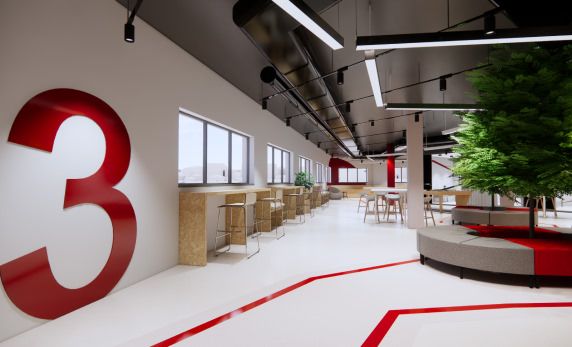The combination of these innovative trends is becoming a repeat pattern applied to multiple projects. A formula that focuses on human well-being and that also has a positive impact on energy efficiency and sustainability.
The implementation of neuroarchitecture and bioclimatic design in office interior design projects has a significant impact on the well-being of employees and, as a result, improves performance. For example, a study by the University of Exeter found that the introduction of plants into the office increased productivity by 15%, as it reduced visual and mental fatigue and improved concentration.
At Moinsa, we explain why the combination of these disciplines is a powerful tool for creating healthy, sustainable and efficient spaces.
Although neuroarchitecture considers factors such as colours, natural light and the integration of natural elements to promote team concentration and inspiration, bioclimatic architecture takes its name from the use of natural elements to adapt to climate change without having to use air conditioning systems, thus reducing energy consumption and providing a much more sustainable space.
“The combination of these disciplines is a powerful tool in creating healthy, sustainable and efficient spaces”.

Office interior design.
What is obtained by mixing the two disciplines?
Improved physical and mental well-being: Bioclimatic design focuses on air quality and thermal comfort, whereas neuroarchitecture can improve mental and emotional well-being. Together, they offer a group of essential factors to create an ideal environment for employees.
Creating more sustainable spaces: The building’s energy consumption and carbon footprint can be reduced by using natural light, passive ventilation, and other bioclimatic design strategies. Along with the acoustic improvements and the outdoor views promoted by neuroarchitecture, this clearly has positive effects on mental health and productivity.
Increased resilience: Buildings that incorporate bioclimatic design and neuroarchitecture principles are able to adapt to climate change and maintain a healthy internal environment at any time of the year.
Greater financial efficiency: In the long term, the application of these combined disciplines can reduce costs if we consider that the comfort and satisfaction of your employees results in improved productivity and, therefore, greater profits.
Virginia Núñez, Head of the Interior Design and Creativity area at Moinsa, explains: “At Moinsa, we work on understanding how the brain responds to different environments, and on ensuring our architects and interior designers are able to create spaces that facilitate a variety of cognitive and emotional functions. To achieve this, we believe the initial phase of studying and conceptualising the space is essential to understanding the customer’s needs”.
